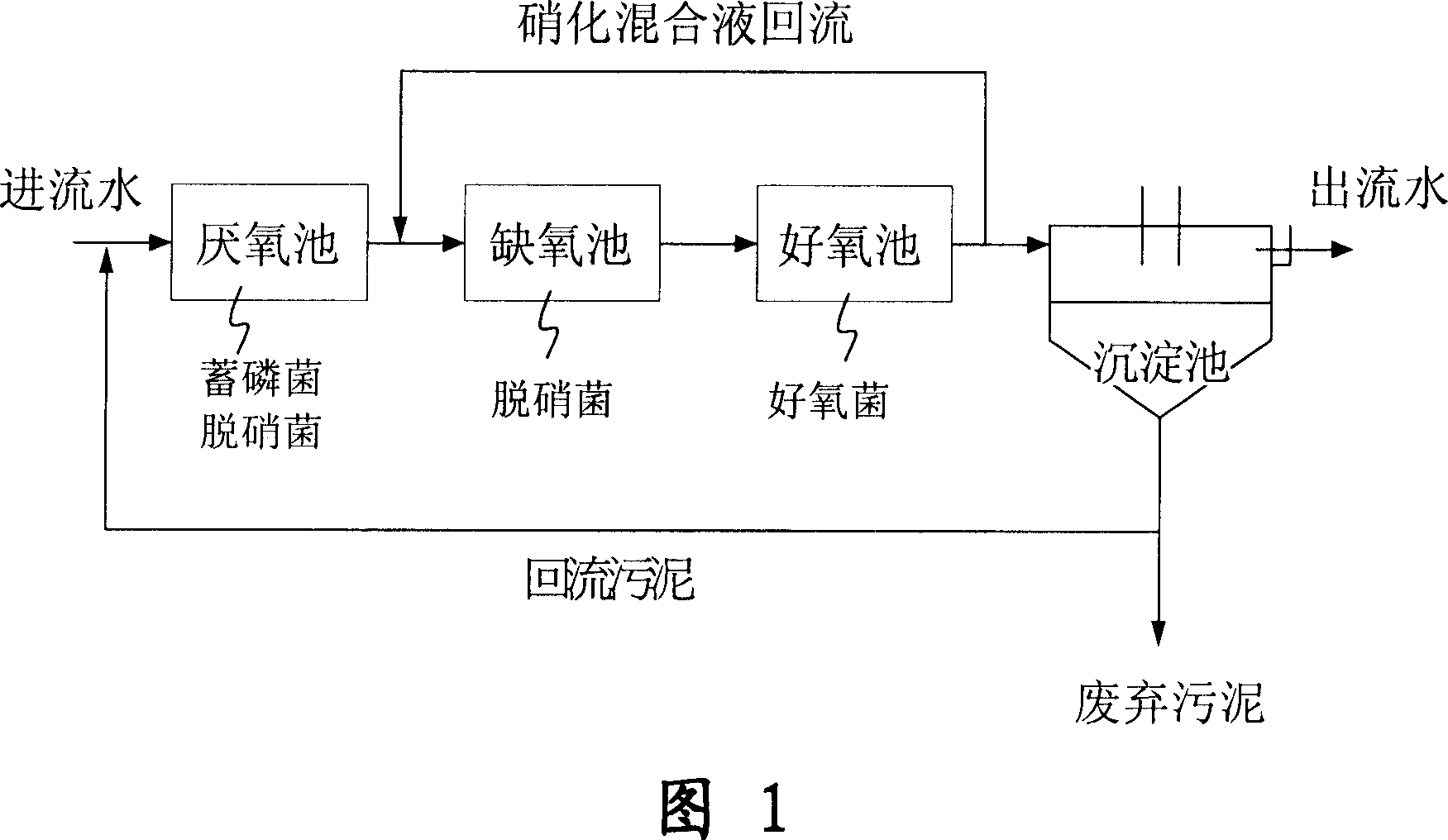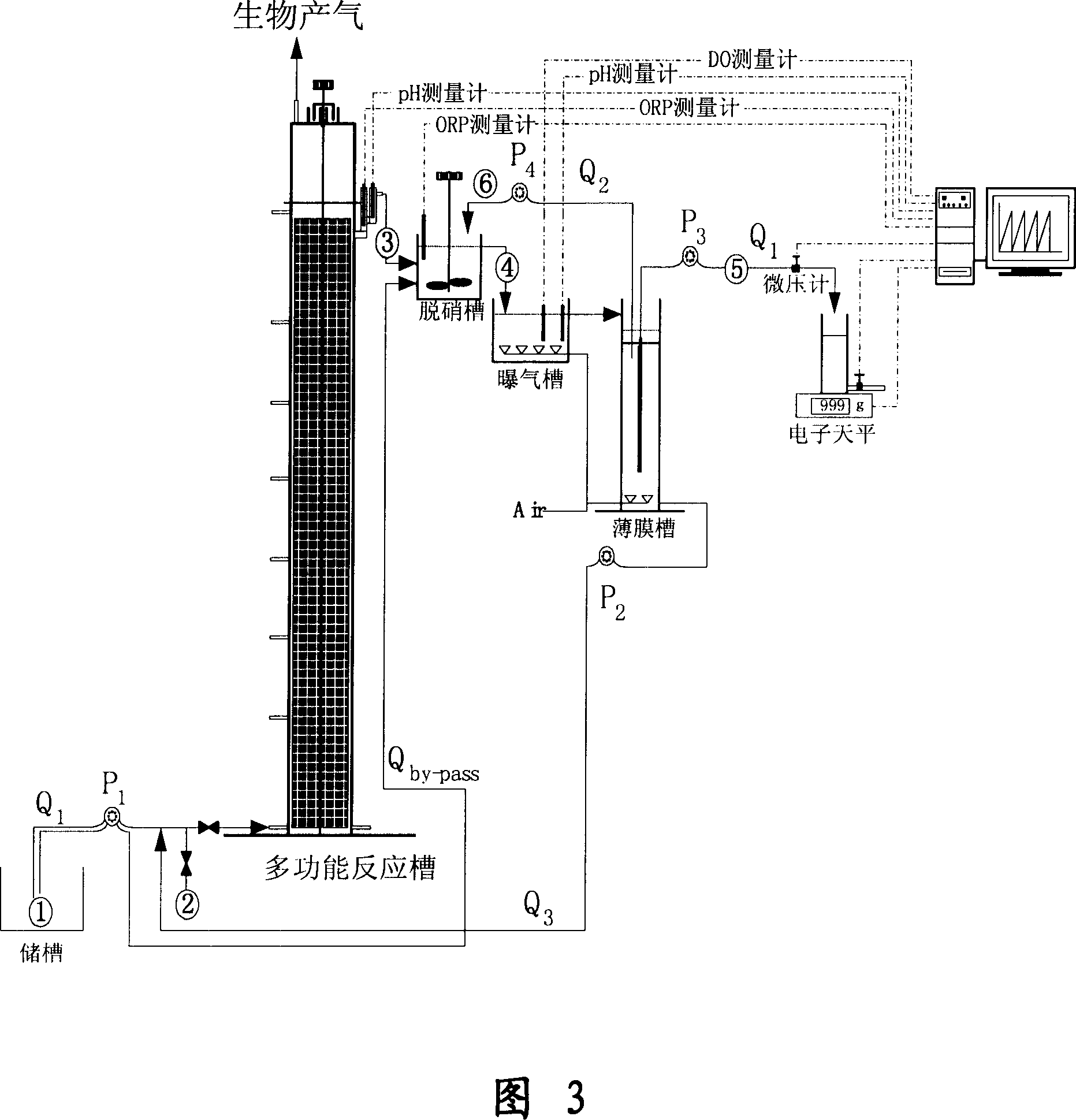Wastewater treatment system and method for removing carbon, nitrogen, phosphor in wastewater
A wastewater treatment system and wastewater technology, applied in the field of methane bacteria, can solve the problems of large power consumption and achieve the effect of reducing power consumption
- Summary
- Abstract
- Description
- Claims
- Application Information
AI Technical Summary
Problems solved by technology
Method used
Image
Examples
Embodiment 1
[0048] Embodiment 1, remove carbon, nitrogen, phosphorus pollutants in waste water with the system of the present invention
[0049] The wastewater treatment system used in this embodiment is shown in Figure 3, and its tanks are corresponding to those shown in Figure 2, wherein the denitrification tank is an anoxic reaction tank, and the aeration tank is an aerobic reaction tank. The microbial planting of the system in this embodiment is to implant granulated methane microorganisms in the multifunctional reaction tank; while the denitrification tank, aeration tank and film tank are all implanted with suspended (non-granularized) denitrification bacteria, phosphorus storage bacteria, nitrification bacteria and general carbon removal bacteria.
[0050] The flow state of each reaction tank is a sludge bed type (incompletely mixed type) in the multifunctional reaction tank, and a completely mixed type in the denitrification tank, aeration tank and film tank. The system operation ...
PUM
 Login to View More
Login to View More Abstract
Description
Claims
Application Information
 Login to View More
Login to View More - R&D Engineer
- R&D Manager
- IP Professional
- Industry Leading Data Capabilities
- Powerful AI technology
- Patent DNA Extraction
Browse by: Latest US Patents, China's latest patents, Technical Efficacy Thesaurus, Application Domain, Technology Topic, Popular Technical Reports.
© 2024 PatSnap. All rights reserved.Legal|Privacy policy|Modern Slavery Act Transparency Statement|Sitemap|About US| Contact US: help@patsnap.com










